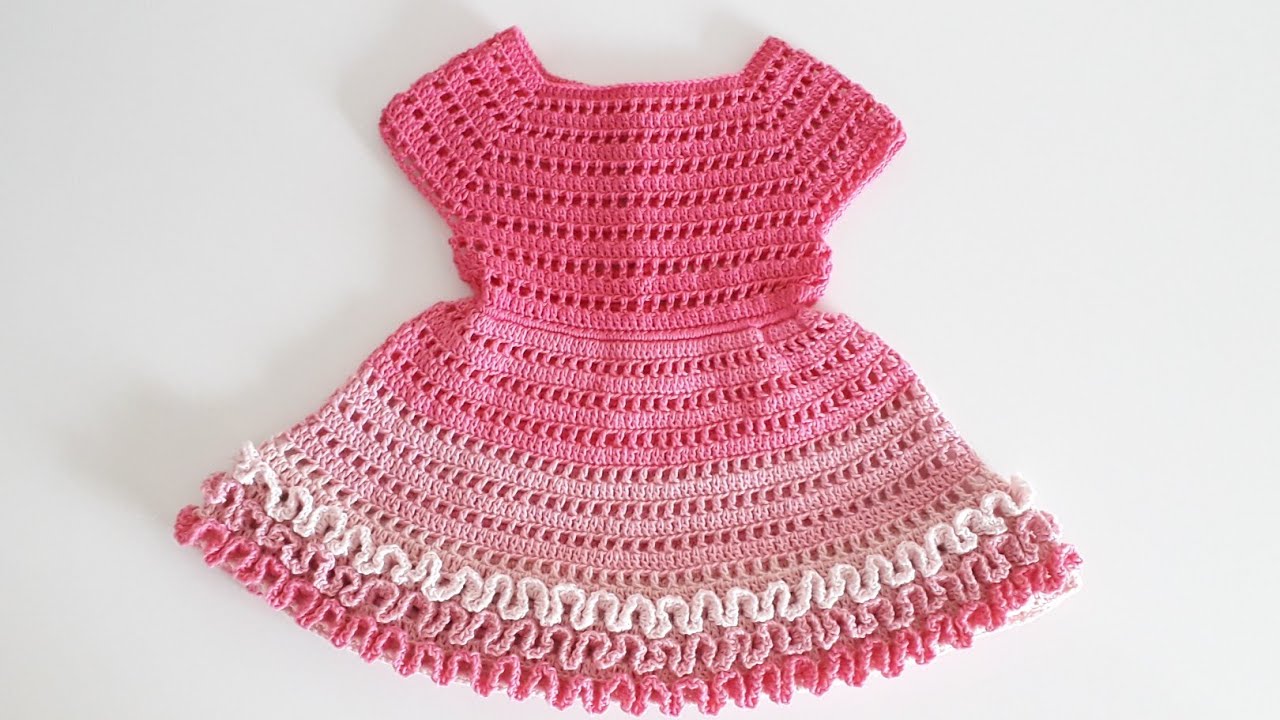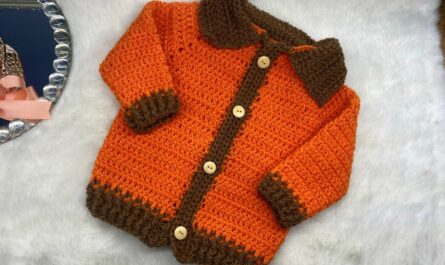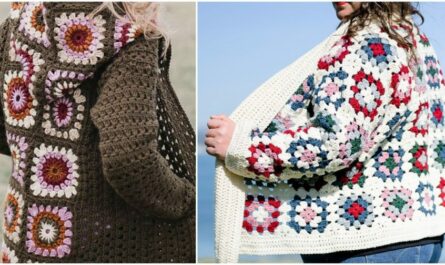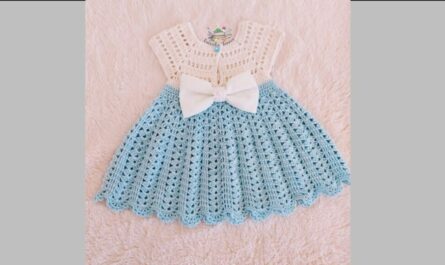Summertime calls for light, breezy, and comfortable attire, and a handmade crocheted dress fits that bill perfectly. Crafting your own summer dress allows for unparalleled customization in color, fit, and style, making it a truly unique addition to your wardrobe. Best of all, many summer dress patterns are designed with simplicity in mind, making this a rewarding project even for crocheters relatively new to garment construction.
This detailed guide will walk you through the essential steps and considerations for crocheting a beautiful and simple summer dress, perfect for soaking up the sun.
Why Crochet a Simple Summer Dress?

- Ultimate Comfort: Designed with breathable yarns and open stitch patterns, a crocheted summer dress allows for excellent airflow, keeping you cool on warm days.
- Personalized Style: Choose your favorite colors, textures, and stitch combinations to create a dress that perfectly expresses your unique aesthetic, something you won’t find in stores.
- Perfect Fit: Custom-make the dress to your exact measurements, ensuring a flattering and comfortable fit.
- Sustainable Craft: Handmade garments contribute to a more sustainable wardrobe, reducing reliance on fast fashion.
- Rewarding Project: Completing a wearable garment is incredibly satisfying and builds valuable crochet skills.
Understanding the “Simple Summer Dress” Aesthetic
The key to a successful summer dress lies in selecting elements that evoke lightness, comfort, and a carefree spirit:
- Color Palette: Bright, Breezy & Natural
- Vibrant & Cheerful: Sunny yellows, coral, turquoise, fuchsia, lime green, and bright blues perfectly capture summer energy.
- Soft Pastels: Mint, lavender, pale pink, peach, and sky blue offer a more delicate and romantic feel.
- Crisp Neutrals: Classic white, creamy ivory, beige, or light grey provide a timeless and versatile base.
- Natural/Earthy Tones: Soft greens, sandy browns, and muted terracotta can evoke a relaxed, bohemian vibe.
- Playful Combinations: Stripes, color blocks, ombre effects, or using a self-striping/variegated yarn can add effortless visual interest.
- Yarn Texture & Weight: Light & Breathable
- Weight: For a truly comfortable summer dress, lighter yarn weights are best.
- Fingering (Category 1) / Sport (Category 2): Ideal for delicate, lacy, and super lightweight dresses.
- DK (Double Knitting / Category 3): A versatile choice that balances speed with a comfortable fabric weight.
- Avoid Worsted (Category 4) or heavier unless you specifically desire a denser, more structured fabric for a cooler summer evening.
- Fiber: The fiber content is paramount for breathability and drape in warm weather:
- Cotton: The undisputed king of summer yarns. It’s breathable, absorbent, has excellent stitch definition, and is durable and easy to care for. Mercerized cotton offers a lovely sheen, while organic cotton provides extra softness.
- Linen/Linen Blends (e.g., Linen/Cotton): Offers exceptional drape, breathability, and gets softer with each wash. Provides a beautiful, slightly rustic texture.
- Bamboo/Bamboo Blends: Known for its silky feel, fantastic drape, and excellent wicking properties, making it very comfortable against the skin in heat.
- Lightweight Acrylics: Many modern acrylics are designed to be soft, drape well, and are durable and affordable. Look for those specifically labelled for garments or with a soft hand.
- Avoid: Wool, heavy synthetic blends, or overly fuzzy/bulky yarns that will trap heat.
- Weight: For a truly comfortable summer dress, lighter yarn weights are best.
- Stitch Patterns: Airy & Delightful
- The key is to create a fabric with good airflow, preventing the dress from feeling too heavy or hot. Focus on stitches with inherent “holes” or openwork.
- Suggestions:
- V-Stitch: Simple, open, works up quickly, creating a lacy, airy fabric.
- Shell Stitch: Creates beautiful, airy texture with scalloped edges, reminiscent of delicate waves or shells.
- Granny Stitch (modern variations): A classic open stitch that creates a lovely, light fabric.
- Filet Crochet: Uses combinations of chains and double crochets to create open mesh or even intricate design motifs.
- Basic Stitches with Openwork: Simple rows of single crochet (sc), half double crochet (hdc), or double crochet (dc) can be interspersed with rows containing chain spaces to create subtle ventilation.
- Lace Patterns: Explore various lace patterns that combine chains with skipped stitches for maximum breathability and elegance.
- Design Elements: Charming & Practical
- Silhouette:
- A-line: Gently flares from the chest or natural waist, offering comfort and a universally flattering drape.
- Simple Shift: A straightforward, relaxed, and comfortable straight design.
- Empire Waist: A fitted bodice with a gathered or flared skirt beginning just below the bust.
- Neckline: Simple and comfortable are key. A round neck, a gentle scoop neck, or a relaxed boat neck are popular choices. Avoid anything too high or constricting.
- Sleeves: Most summer dresses are sleeveless for maximum coolness. Simple finished armholes are perfect. Small cap sleeves or very short flutter sleeves (often created with shell stitches) can add a sweet touch.
- Closure: For simplicity, many summer dresses are pullover style, meaning no buttons, zippers, or ties are needed. The neckline should be designed to be wide enough to slip comfortably over the head without excessive stretching.
- Hem: A simple straight hem, a delicate picot edging, or a more elaborate shell border can finish the bottom of the dress beautifully.
- Silhouette:
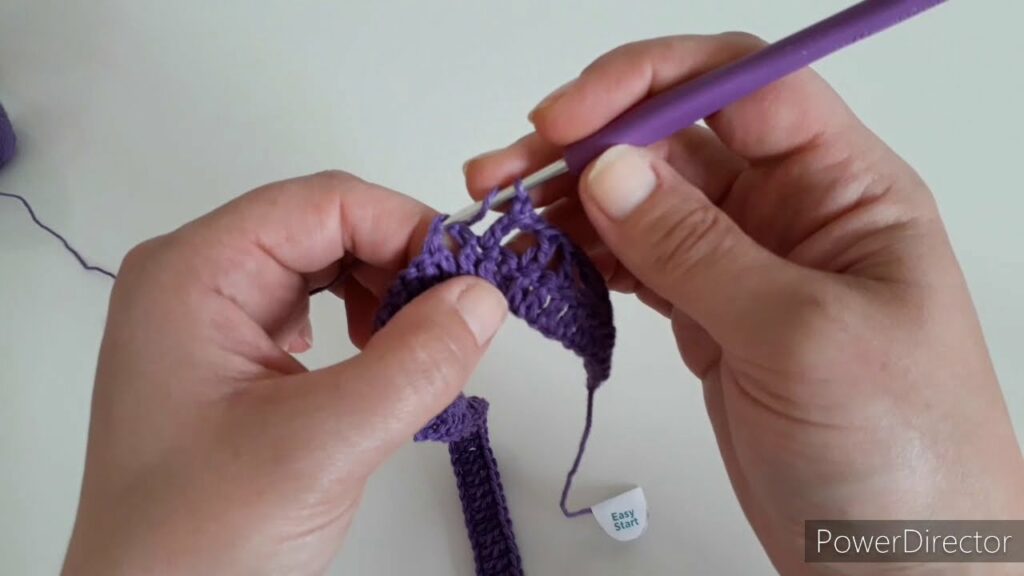
Planning Your Simple Summer Dress Project
Careful preparation is the foundation for a successful and enjoyable crocheted garment.
- Size Selection:
- Measure your (or the intended wearer’s) bust/chest circumference, natural waist, hips, and desired length from shoulder to hem. Compare these to the pattern’s size chart.
- Remember that crochet fabric has some give, but aiming for the correct size based on your measurements is crucial.
- Pattern Selection (Essential!):
- While this guide provides creative direction, you must choose a well-written crochet pattern specifically for a summer dress. Look for patterns labeled “simple,” “easy,” or “beginner-friendly.”
- Look for:
- Clear, step-by-step instructions for all shaping (bodice, waist, skirt flare, neckline, armholes).
- Detailed schematics and comprehensive sizing charts.
- High-quality photos of the finished dress.
- CRUCIALLY, precise gauge information for the specific stitch patterns used.
- Construction Method:
- Top-Down (Common for Dresses): This is highly recommended for its simplicity and ability to try on as you go. You start crocheting at the neckline or upper yoke and work downwards, often in the round, gradually increasing stitches to form the bodice and then the skirt.
- Bodice-First, then Skirt: You crochet the bodice portion separately (either in the round or as flat panels to be seamed). Then, you join your yarn to the bottom edge of the bodice and work the skirt downwards, typically in the round, increasing for flare.
- The Gauge Swatch (NON-NEGOTIABLE!):
- This is the single most critical step for any garment. Crochet a large swatch (at least 4×4 inches / 10×10 cm) using your chosen yarn and hook in the main stitch pattern of the dress.
- Wash and block your swatch exactly as you would the finished dress. Then, measure your stitches and rows per inch/cm meticulously.
- If your gauge doesn’t match the pattern’s, adjust your hook size (go up for fewer stitches per inch, down for more) until it matches. Skipping this step is the primary reason for a garment not fitting correctly.
Materials You’ll Need
- Yarn: (As detailed in the “Summer Dress Aesthetic” section). The quantity will vary significantly by dress size and yarn weight, but typically 3-8 skeins.
- Crochet Hook: The size recommended by your pattern, adjusted based on your gauge swatch.
- Notions:
- Stitch Markers: Invaluable for marking the beginning of rounds, increase points, and dividing sections (e.g., for armholes).
- Tapestry Needle: For neatly weaving in yarn ends.
- Scissors: Sharp and dedicated for yarn.
- Measuring Tape: For checking gauge and garment dimensions as you progress.
- Blocking Mats and T-pins (Recommended): Especially for lace patterns and cotton/linen yarns, blocking helps open up stitches, even out the fabric, and achieve a beautiful drape.
Key Crochet Techniques for a Simple Summer Dress
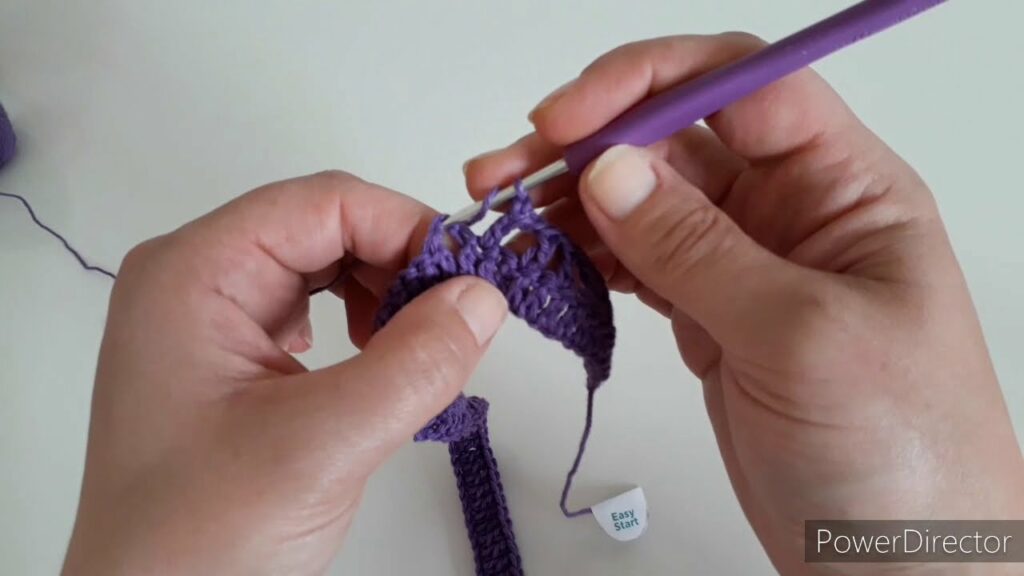
You’ll utilize fundamental crochet stitches and basic garment shaping techniques:
- Basic Stitches: Chain (ch), Slip Stitch (sl st), Single Crochet (sc), Half Double Crochet (hdc), Double Crochet (dc). These are the building blocks.
- Increasing & Decreasing: Essential for shaping the bodice, creating waist definition (if desired), and flaring the skirt. Your pattern will provide specific instructions for these.
- Working in Rounds: Very common for seamless dresses. You’ll typically join each round with a slip stitch.
- Working in Rows: If your pattern involves creating flat panels for the bodice or skirt before seaming.
- Joining (if applicable): If you’re working panels, the Mattress Stitch creates an almost invisible and very strong seam.
- Lace/Openwork Stitches: Learning to execute your chosen airy stitch pattern accurately and consistently.
- Edging: A simple border of single crochet, a delicate picot edge, or a small shell border can provide a neat and polished finish around the neckline, armholes, and bottom hem.
Step-by-Step Flow (Conceptual Guide – Assuming Top-Down Construction)
This is a common and beginner-friendly approach for dresses.
- Preparation:
- Thoroughly read your chosen pattern from start to finish.
- Make that gauge swatch! Adjust your hook size if necessary.
- Gather all your yarn, hook, stitch markers, and other notions.
- Crochet the Yoke/Bodice:
- Begin as per your pattern’s instructions, typically by chaining a specific number of stitches to form the neckline.
- Work the yoke (the upper part of the dress that covers the chest and shoulders). This is often worked in the round, with increases strategically placed to shape the shoulders and chest.
- Divide for Body & Armholes:
- Once the yoke reaches the correct size (measured around your bust/chest, as per pattern instructions), you’ll “separate” the body from the armholes.
- Your pattern will instruct you to skip a section of stitches for the armholes (or chain a few stitches for underarms) and then join the remaining sections to continue working the main body of the dress.
- Crochet the Skirt:
- Continue working in the round from the waist/bodice down. Your pattern will specify how often to increase stitches to create the desired flare (e.g., a gentle A-line, a fuller skirt, etc.).
- Work until the dress reaches your desired length.
- Finish Neckline:
- Add a clean, flexible border around the neckline. This could be a few rounds of single crochet, or a simple picot edging.
- Finish Armholes (and Sleeves if applicable):
- Add a neat border around the armhole openings. If your design includes cap or flutter sleeves, finish these now.
- Finish Hem:
- Add a decorative or simple border to the bottom hem of the dress.
- Finishing Touches:
- Weave in all remaining yarn ends meticulously using your tapestry needle. Loose ends can unravel and detract from the finish.
- Blocking (Highly Recommended):
- Gently wet or steam the finished dress.
- Carefully shape it to the desired dimensions, gently opening up any lace stitches and evening out the fabric.
- Pin it flat on blocking mats and allow it to dry completely. Blocking is crucial for summer dresses as it enhances drape, evens stitches, and sets the final, beautiful shape.
Tips for Success

- Read the Pattern Thoroughly: Before you begin, read the entire pattern from start to finish. Understand the construction, stitch abbreviations, and all shaping instructions.
- Don’t Skip the Gauge Swatch! (This cannot be emphasized enough for any garment project to ensure proper fit and drape).
- Use Stitch Markers! They are invaluable for marking the beginning of rounds, increase/decrease points, and raglan lines (if applicable).
- Count Your Stitches! Regularly verify your stitch counts at the end of each row or round. This simple habit helps you catch any errors early.
- Choose Yarn Wisely: The fiber content and weight are the most crucial factors for a comfortable and beautiful summer dress.
- Be Patient: Crocheting a garment takes time and attention to detail. Enjoy the process and the satisfaction of seeing your dress come to life.
- Blocking is Your Best Friend: Especially with cotton, linen, bamboo, and lace stitch patterns, blocking truly transforms the garment, making it drape beautifully.
Caring for Your Crocheted Summer Dress
To ensure your handmade summer dress remains soft, beautiful, and vibrant:
- Follow Yarn Label Care Instructions Strictly: Always defer to the specific instructions on your chosen yarn skein.
- Gentle Washing: Hand wash in cool water with a mild detergent, or use your machine’s delicate/gentle cycle (only if the yarn is specifically labeled as machine washable).
- Reshape and Lay Flat to Dry: Gently squeeze out excess water (never wring or twist!). Reshape the dress back to its original dimensions and lay it flat on a clean towel or a mesh drying rack to air dry completely.
- Never Hang Wet: The weight of a wet crocheted garment can cause it to stretch and distort significantly if hung.
VIDEO TUTORIAL ;
Crocheting a simple summer dress is a wonderfully rewarding project that yields a unique and cherished piece perfect for warm-weather days. With careful planning and attention to detail, you’ll create a comfortable, stylish, and truly personalized garment to enjoy all season long. Sources
